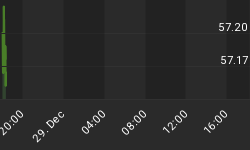In a surprise to the majority of forecasters, Brazil's central bank lowered its benchmark rate by a larger-than-expected 100bps on Wednesday after an official vote of 5-3 (the three voted for a 75 bp cut), bringing the overnight Selic rate down to 12.75%. This move was justified after a subdued inflation reading for December, but the committee's main reason for the move was a significant deterioration in domestic conditions.
Chart 1
Industrial production registered a poor November, down 6.2% y-o-y, reflecting weak demand for its exports, which have been a main driver of the economy in recent years. Additionally, more than 650,000 formal jobs were lost in the month of November, signaling an inevitable drop in still-resilient consumer spending in the months to come.
Chart 2
And what is the source of all this domestic deterioration? Risk aversion. Once thought to be impervious to the global credit crisis, the economy has been suffering ever since that mother-of-all bank collapses - Lehman Brothers. As a result, investment has slowed to a near standstill, trade finance has become largely unattainable, and the Real has plunged some 34% against the dollar since its most recent peak. Investors in the developed world have fled these riskier emerging markets, and thus, the economy is seizing up because of the combination of lack of financing and external demand. Over the next few months, expect these external factors to have a more marked effect on domestic activity (i.e. plummeting consumer spending).
Chart 3
With two additional months of data at its next meeting on March 10-11, the monetary policy committee may have an even firmer foundation on which to justify a large reduction in its main policy rate. Given the extremes of the times, and the fact that the Real firmed after the cut (signaling a positive reception of deeper rate cuts by FX markets), we would venture to say that 100 is the new 75. In other words, expect to be surprised at how rapidly the Selic is lowered.
















